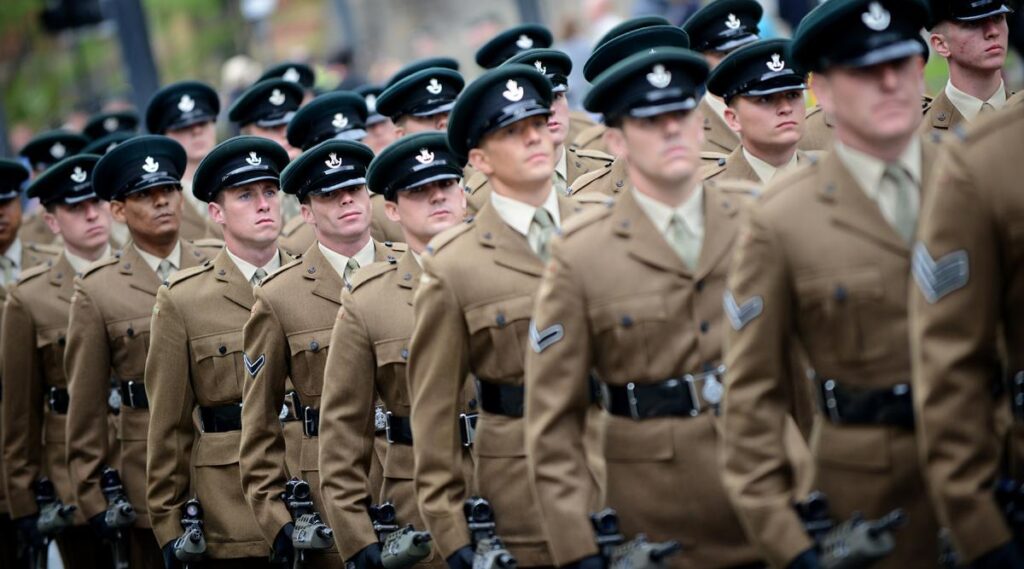
The Rifles is a distinguished regiment of the British Army that carries forward a rich legacy of service, innovation, and adaptability. Formed on February 1, 2007, The Rifles were created through the amalgamation of four existing infantry regiments: the Devonshire and Dorset Light Infantry, the Royal Gloucestershire, Berkshire and Wiltshire Light Infantry, The Light Infantry, and the Royal Green Jackets. As the largest infantry regiment in the British Army, The Rifles maintain the traditions and heritage of their antecedent regiments while embracing modern military practices.
Historical Background
The formation of The Rifles was part of the Army’s Future Army Structure program, which aimed to create more flexible and capable units. The antecedent regiments that combined to form The Rifles each had storied histories:
- Devonshire and Dorset Light Infantry: Formed in 1958 from the amalgamation of the Devonshire Regiment and the Dorset Regiment, both with origins dating back to the 17th century.
- Royal Gloucestershire, Berkshire and Wiltshire Light Infantry: Created in 1994 by merging the Gloucestershire Regiment with the Duke of Edinburgh’s Royal Regiment (Berkshire and Wiltshire).
- The Light Infantry: Established in 1968 by amalgamating four regiments, all with significant histories in various British military campaigns.
- Royal Green Jackets: Formed in 1966 by merging three regiments, including the famed 95th Rifles, known for their role in the Napoleonic Wars.
Structure and Organization
The Rifles are organized into both regular and reserve battalions, providing a versatile and comprehensive infantry capability:
Regular Battalions:
- 1st Battalion, The Rifles (1 RIFLES): Light infantry battalion, often deployed for rapid response and conventional warfare.
- 2nd Battalion, The Rifles (2 RIFLES): Light infantry, specializing in high-tempo operations.
- 3rd Battalion, The Rifles (3 RIFLES): Light infantry, with a focus on urban operations and reconnaissance.
- 4th Battalion, The Rifles (4 RIFLES): Mechanized infantry, using armored vehicles to enhance mobility and protection.
- 5th Battalion, The Rifles (5 RIFLES): Armored infantry, equipped with Warrior infantry fighting vehicles for frontline combat roles.
Reserve Battalions:
- 6th Battalion, The Rifles (6 RIFLES): Army Reserve battalion, providing additional manpower and expertise to support regular units.
- 7th Battalion, The Rifles (7 RIFLES): Similar to 6 RIFLES, focused on supporting operations and training.
Operational Role
The Rifles are trained for a wide range of military operations, reflecting their light infantry heritage and modern mechanized capabilities:
- Infantry Operations: Engaging in direct combat, securing key positions, and providing security in various environments.
- Rapid Deployment: As light infantry, they are capable of quick deployment to respond to emerging threats and crises.
- Peacekeeping: Participating in international peacekeeping missions, contributing to stability and security in conflict zones.
- Humanitarian Assistance: Providing aid and support during natural disasters and humanitarian crises.
- Training and Advisory: Assisting in the training and development of foreign military forces.
Notable Deployments
Since their formation, The Rifles have been involved in numerous significant deployments:
- Iraq (Operation Telic): The Rifles battalions participated in the invasion and subsequent stabilization efforts in Iraq.
- Afghanistan (Operation Herrick): Served in Helmand Province, contributing to counter-insurgency operations and training Afghan security forces.
- Balkans: Participated in peacekeeping operations in Bosnia and Kosovo, helping to maintain stability in the region.
- Estonia: Part of NATO’s Enhanced Forward Presence, contributing to the deterrence and defense posture in Eastern Europe.
Traditions and Culture
The Rifles maintain a strong sense of tradition, drawing on their historical roots while fostering a modern regimental culture:
- Motto: “Swift and Bold,” reflecting their agility and courage in operations.
- Cap Badge: Features a bugle horn, a symbol traditionally associated with light infantry and rifle regiments.
- Regimental March: “Mechanized Infantry” and “The Buglers’ March,” showcasing their musical heritage and connection to their light infantry roots.
- Bugle Calls: The use of bugles for communication is a distinctive tradition of The Rifles, emphasizing their light infantry heritage.
- Regimental Days: Celebrating significant historical events and battles from their antecedent regiments.
Modern Role and Adaptability
The Rifles continue to evolve to meet the demands of contemporary military operations. Their adaptability ensures they remain capable of responding to a wide range of scenarios, from high-intensity conflict to peacekeeping and humanitarian missions. Investment in training, equipment, and personnel development keeps The Rifles at the forefront of the British Army’s operational capabilities.
Conclusion
The Rifles embody the enduring legacy of British light infantry, combining historical traditions with modern military effectiveness. As the largest infantry regiment in the British Army, they continue to serve with distinction in various operational theatres, upholding their motto “Swift and Bold.” The Rifles remain a vital and respected component of the British Army, demonstrating versatility, courage, and excellence in all their endeavors.